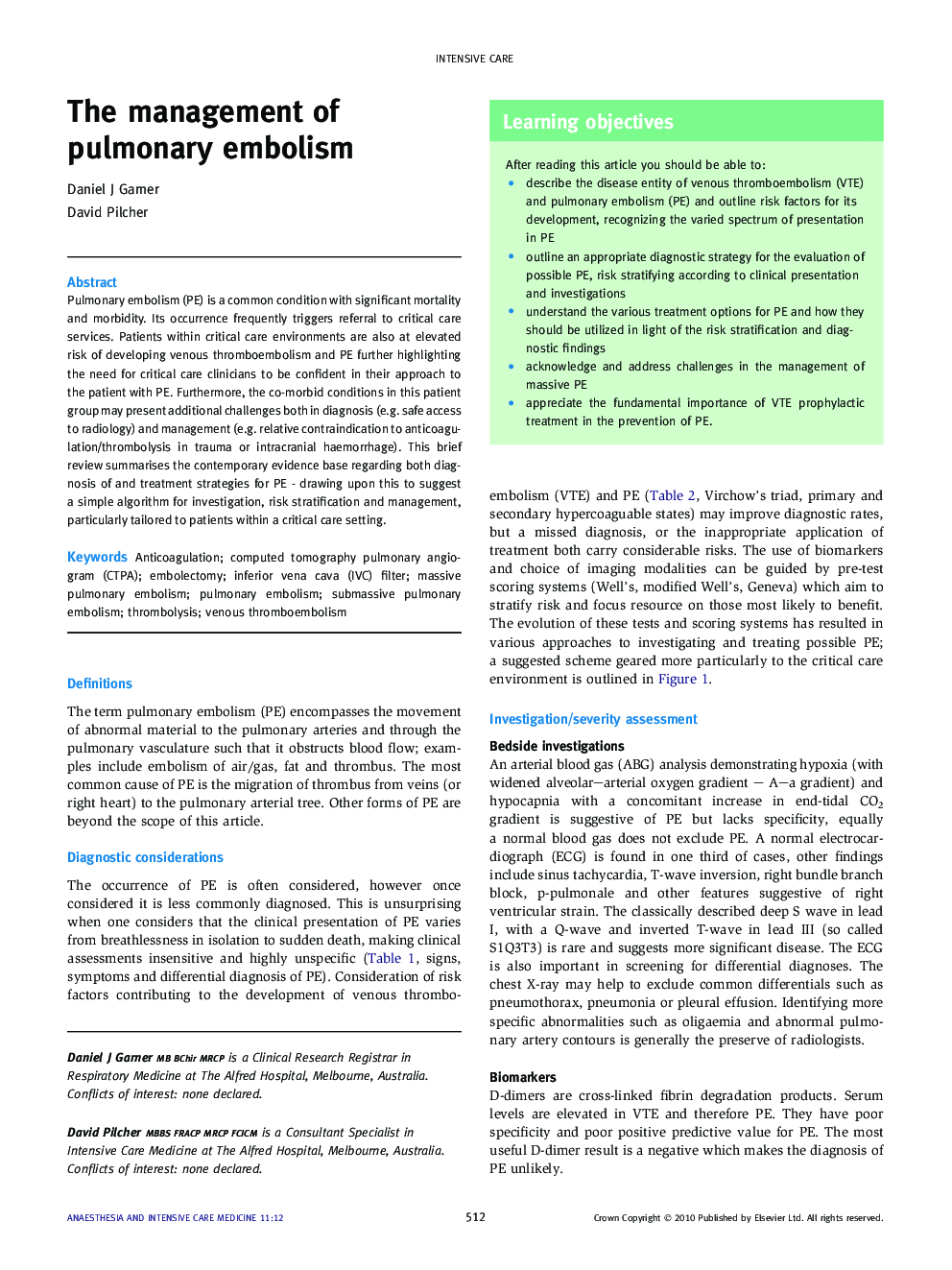| Article ID | Journal | Published Year | Pages | File Type |
|---|---|---|---|---|
| 2742893 | Anaesthesia & Intensive Care Medicine | 2010 | 7 Pages |
Pulmonary embolism (PE) is a common condition with significant mortality and morbidity. Its occurrence frequently triggers referral to critical care services. Patients within critical care environments are also at elevated risk of developing venous thromboembolism and PE further highlighting the need for critical care clinicians to be confident in their approach to the patient with PE. Furthermore, the co-morbid conditions in this patient group may present additional challenges both in diagnosis (e.g. safe access to radiology) and management (e.g. relative contraindication to anticoagulation/thrombolysis in trauma or intracranial haemorrhage). This brief review summarises the contemporary evidence base regarding both diagnosis of and treatment strategies for PE - drawing upon this to suggest a simple algorithm for investigation, risk stratification and management, particularly tailored to patients within a critical care setting.
